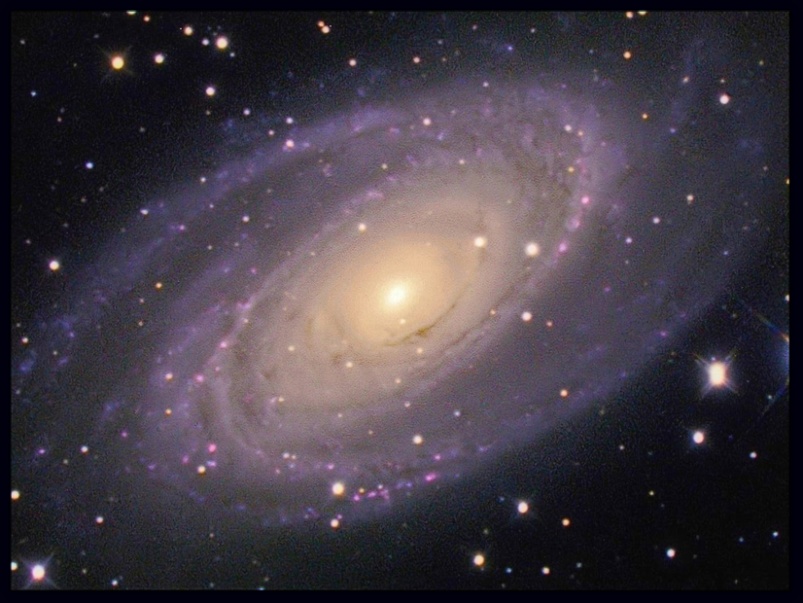|
|
Galaxies M 81 |  | (CLICK REFRESH ON YOUR BROWSER IF IT DOESN'T APPEAR)
Equipment and exposition:
GSO RC 8" F/8
ATIK 314L with Starlight Usb filter wheel, Astronomik Filters 31,8
Guided with Starlight Lodestar with Orion OAG
Neq6 Geoptik Modded
L : 17 X 600 bin 1x
RGB : 10X 600 bin 1x
Ha : 5 x 900 bin 1x
Processed with Maximdl,Photoshop, Cs4
SIte : Lusernetta, West Alps, Italy 03/02/2011
FULL SIZE
About this object:
Messier 81 (also known as NGC 3031 or Bode's Galaxy) is a spiral galaxy about 12 million light-years away in the constellation Ursa Major. Due to its proximity to Earth, large size and active galactic nucleus (which harbors a 70 million M supermassive black hole), Messier 81 has been studied extensively by professional astronomers.
Most of the emission at infrared wavelengths originates from interstellar dust. This interstellar dust is found primarily within the galaxy's spiral arms, and it has been shown to be associated with star formation regions. The general explanation is that the hot, short-lived blue stars that are found within star formation regions are very effective at heating the dust and hence enhancing the infrared dust emission from these regions.Messier 81 is the largest galaxy in the M81 Group, a group of 34 galaxies located in the constellation Ursa Major. The distance from the Earth to the group is approximately 11.7 Mly (3.6 Mpc), making this one of the closest groups to the Local Group, which contains the Milky Way.
M81 is gravitationally interacting with Messier 82 and NGC 3077. The interactions have stripped some hydrogen gas away from all three galaxies, leading to the formation of filamentary gas structures in the group. Moreover, the interactions have also caused some interstellar gas to fall into the centers of Messier 82 and NGC 3077, which has led to strong starburst activity (or the formation of many stars) within the centers of these two galaxies.
Text from Nasa |
|
|
|
|
|

